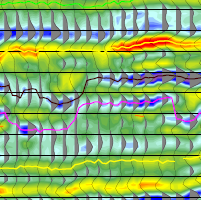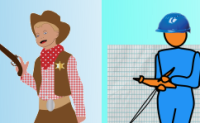Seismic in the public domain
 This applicant even threw in her seismic to convince the regulator of her position. Unfortunately, the application was closed after she submitted net pay maps, cross sections, seismic sections and pressure information into the public domain. And it was all for nothing.
This applicant even threw in her seismic to convince the regulator of her position. Unfortunately, the application was closed after she submitted net pay maps, cross sections, seismic sections and pressure information into the public domain. And it was all for nothing.
Some applicants think that the more info they submit, the more the regulator will agree with them. This is not always the case. We find that you need to give just enough information to convince the regulator, no more and no less. Too little leaves them unconvinced. Too much information slows down the decision process while they critically review every piece. Our sister company, Proven Reserves, knows just how much information to submit.
Take a peek at his seismic. Help yourself to his application documents through our secure check out.
Buy these submission docs now Subscribers get them for freeEach AER application contains your neighbor's perspective on the exploitation of oil and gas formations. Applications contain more technical data even than SPE papers.
Would you like to see what other operators in your areas are thinking about seismic, multifractured wells, polymer schemes and recovery? AppIntel can help.
Tags: AER application, Closure, Seismic, Tight
 Granger Low 5 Jan 2016
Granger Low 5 Jan 2016

Non-meridian thermal wells
Still drilling horizontal wells N-S? Why?

Steam surfactant co-injection
Want to win? What is your competitive advantage?

Surprise! Sour gas production from a sweet thermal scheme
Dealing with surprises in the oil and gas industry. What to do next.

10 ways to increase production before Christmas - Infographic
For your wall to remind you

10 ways to increase production before Christmas
Each cost less than half a million




 Calgary, Alberta, Canada
Calgary, Alberta, Canada
 Share
Share